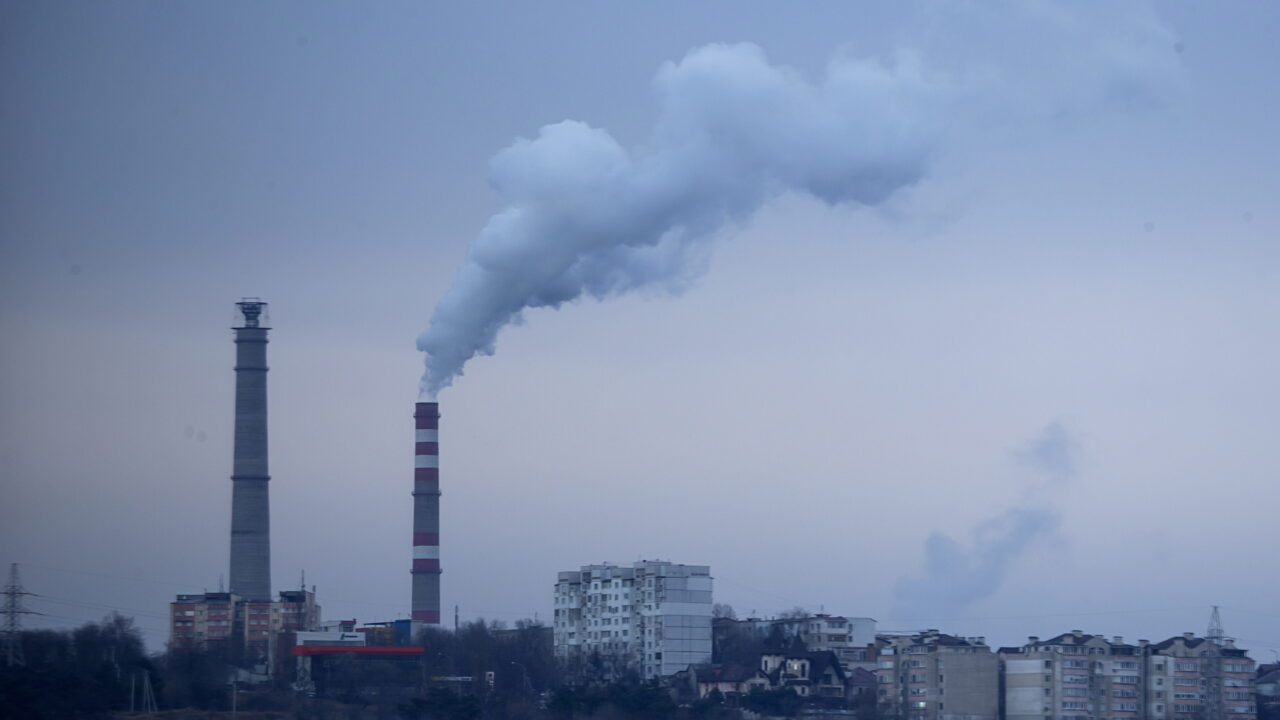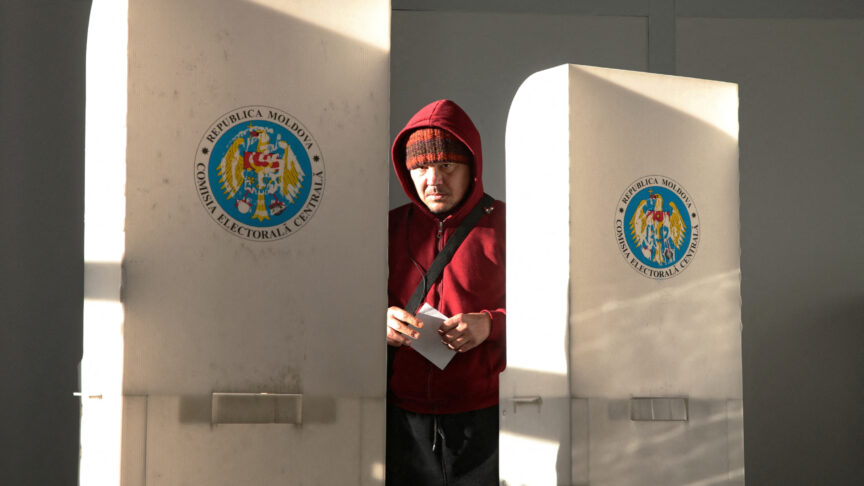Escape routes: How the EU can help Moldova end its dependence on Russian gas
Moldova’s total dependence on Russian gas makes it a key front in Moscow’s hybrid war. The EU should help Moldova diversify its energy supplies to prevent further destabilisation
As Russia prosecutes its war on Ukraine, it is active on many fronts to shore up its position. One of these is the energy warfare it is conducting against EU candidate state Moldova, which is especially vulnerable to this sort of attack. Not only is the country entirely dependent on Russian gas, but the Kremlin is eager to undermine President Maia Sandu’s pro-European government in any way it can – and to punish Moldova for supporting Ukraine in the war. Russia reduced gas supplies to Moldova by 30 per cent on 1 October, and the Kremlin could still cut off its pipelines to the country altogether. So, the Moldovan government is facing three big problems as winter approaches. The first is surviving the Kremlin’s political pressure beyond energy. The second is finding alternative gas supplies. And the final challenge is finding them at affordable prices.
Sandu’s government has faced coercion from Russia ever since it took office in August last year. In October 2021, Gazprom – which provides all of Moldova’s gas through pipelines from the east – increased gas prices and reduced supply to Moldova, leading the government to declare a state of emergency. Moldova had barely recovered from that crisis when Russia launched its all-out invasion of Ukraine on 24 February. Political pressure then built up over the summer, with fugitive oligarch Ilan Shor’s Moscow-backed political party leading largely astroturfed street protests. Senior officials from the Shor Party visited Moscow in September in search of political and media support. Soon afterwards, the demonstrations evolved into a permanent camp outside the presidential administration, featuring slogans such as “No to a Cold War, No to a cold Winter”.
Economic pressure ramped up at the same time. Last year, Gazprom gave Moldova an initial price of $450 per thousand cubic metres of gas dependent on spot market prices for both gas and oil. Dramatic increases in these prices, especially for gas, saw them rise to $1,883 by September this year. They fell to $1,028 by 1 October, but household energy tariffs have nevertheless gone up six-fold in a year, with the latest increase kicking in at the start of the month – just as Russia announced the squeeze in supply.
These soaring energy prices have contributed to inflation of 34 per cent, which was exacerbated by general supply shortages. (Without normal trade with Ukraine, there are only five main crossing points with Romania.) The result has been widespread energy poverty in Europe’s poorest country. To ease the cost of living, the government has put together short-term relief packages costing 5 billion lei (or €250m) – a huge sum for Moldova.
If Russia goes further and entirely cuts off supplies to Moldova, this will also cut off supplies to Transnistria – as all Gazprom’s pipelines run across its territory. Transnistria currently gets its gas from Russia for free (or, rather, the debt is loaded on to Chisinau). A cut-off would place Moldova in the position of buying gas for the whole country. And Sandu has said that Chisinau would expect Transnistria to pay its share. This would threaten the uneasy equilibrium brought about by Russia’s setbacks in its war against Ukraine and Transnistria’s trade isolation, from which an informal truce between Chisinau and Transnistria has emerged. As Iulian Groza, Moldova’s former vice-minister of foreign affairs, said in an interview with this author: “they give us electricity and we give them licences for steel export” to the EU.[1]
A breakdown in this arrangement would severely disrupt Moldova’s electricity supplies. The country only produces 25-30 per cent of its own electricity needs. Seventy per cent of the rest comes from Transnistria (of course, produced with Russian gas). The remaining 30 per cent comes from Ukraine. Moldova has bought a greater percentage of electricity from Ukraine in the past, but the Russian occupation of the Zaporizhzhia nuclear complex is threatening a quarter of Ukraine’s supplies. A World Bank-backed project to build a high voltage electricity line from Moldova to Romania is three years from completion.
Moldova’s options for alternative gas supplies are more promising. But the country faces stiff competition for many of these, since the whole of Europe is trying to diversify away from Russian gas and build up storage for the winter. This contributes to the final and biggest problem for Moldova: affordability. Any open market gas purchases would be at a vastly higher price than Moldova has been used to.
Ways out of Moldova’s energy crisis
Other pipelines
Three other pipelines run into Moldova that could break Gazprom’s stranglehold on the country’s gas supplies. In 2021, the government successfully experimented with using the biggest of these, at Oleskiivka in the north, to import 1 million cubic metres of gas from Poland. This high-capacity route could potentially cover all of Moldova’s needs. The country could also acquire cheaper gas via a new pipeline that runs from Iasi in Romania to Ungheni and then to Chisinau – which was officially completed in October 2021. This has the potential to meet another 30 per cent of Moldova’s needs, though mainly in the Chisinau metropolitan area. The third option is the Balkan pipeline in the south. This is potentially the most interesting. Gas from Turkey and Azerbaijan is now reaching Europe through the Southern Gas Corridor and the Interconnector Greece-Bulgaria link. And the Trans-Balkan Pipeline could transport this gas further north. Chisinau is currently in negotiations with Azerbaijan to secure extra supply.
Support from Romania
Moldova’s ally Romania is emerging as an energy hub for eastern and southern Europe. It is ramping up offshore gas production in the Black Sea through ventures such as its Neptun Deep drilling project, and introduced a more favourable energy tax regime in summer 2022. Neptun Deep should become fully operational in 2026. Romania could also exploit natural gas deposits in the Carpathian mountains. Earlier this year, Moldova arranged for two weeks’ worth of gas reserves to go into Romanian storage. There is even the possibility of Moldovan participation in Romania’s purchase of small modular nuclear reactors from the United States. The US could also contribute to supplies of liquefied natural gas.
EU energy market integration and financial support
According to Moldovan parliament member, Dumitru Alaiba, if the government can get through the winter, it has quietly “removed all the legal obstacles to unbundling” the gas sector next year.[2] Moldovagas, which is 50 per cent owned by Gazprom and 13.4 per cent by Transnistria (leaving the Moldovan government with 35.3 per cent), is on the way to becoming more transparent and open to regulation. This could combat the company’s many unlawful practices – and make it difficult for Gazprom to stick around. Alaiba even claimed confidently that “next year it will be goodbye to Gazprom”.[3]
Moldova’s energy supply diversification will accelerate. But the country needs hard cash, to make up the supply shortfall without adding to the already huge social burden – and without Russia and oligarchs from the old regime creating and exploiting social unrest. Conversely, an unstable Moldova would unbalance Ukraine, as Russia attempts to create new fronts to relieve the pressure of Kyiv’s counter-offensive in the east.
An unstable Moldova would unbalance Ukraine, as Russia attempts to create new fronts to relieve the pressure of Kyiv’s counter-offensive in the east.
There are two dimensions to the energy crisis in Moldova: the international one – dependence on Russian gas and Transnistrian electricity, which is more or less the same problem – and the domestic one – the social consequences and potential destabilising effect. Moldova is not only a collateral victim of the war in Ukraine; Russia’s energy leverage is clearly part of its hybrid war against more than just Ukraine. The European Union needs to consider actions both short term, such as financial assistance to help Moldova purchase gas on international markets if needed; and long term, such as speeding up interconnection with EU energy networks, and supporting renewable energies and increasing energy efficiency in Moldova. It should address both timelines – otherwise Moldova will keep spending resources on short-term solutions without investing in the long-term ones that could increase its energy independence and resilience.
[1] ECFR interview with Iulian Groza, 15 September 2022.
[2] ECFR interview with Dumitru Alaiba, 16 September 2022.
[3] ECFR interview with Dumitru Alaiba, 16 September 2022.
The European Council on Foreign Relations does not take collective positions. ECFR publications only represent the views of their individual authors.



